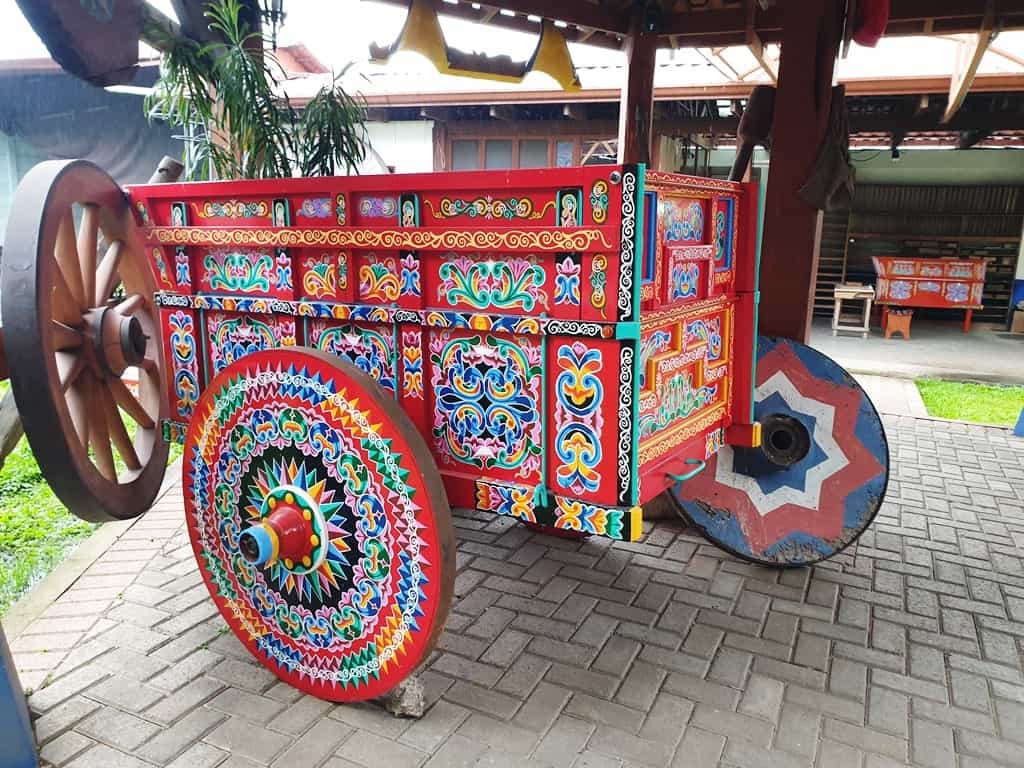Within Costa Rica itself, 7 provinces can be found. For this article, we will be exploring just one in particular: Alajuela. One of the largest of the 7 provinces, Alajuela boasts a wealth of communities, environments, and habitats; from mountainous foothills to wild jungles. It is one of the most populated areas of the country; just under a quarter of the entire population of Costa Rica can be found residing here.
With the sheer number of people occupying one province, it comes without surprise that a variety of communities and different cultures can be found. One of my very favorite places in terms of culture and vibrancy can be found 30km Northwest of the main capital of the province, Alajuela City. Welcome to Sarchí.
Disclaimer: This post contains affiliate links. This means that should you click on certain links, and then subsequently purchase a product, I will receive a small commission.
Table of Contents
The Quaint Village of Sarchí in Costa Rica
About Sarchí, Costa Rica
Speak to any Costa Rica, or Tico as they’re locally known, and they will enlighten you with stories about Sarchí. This quaint village is rich in culture and heritage, dating back hundreds of years.
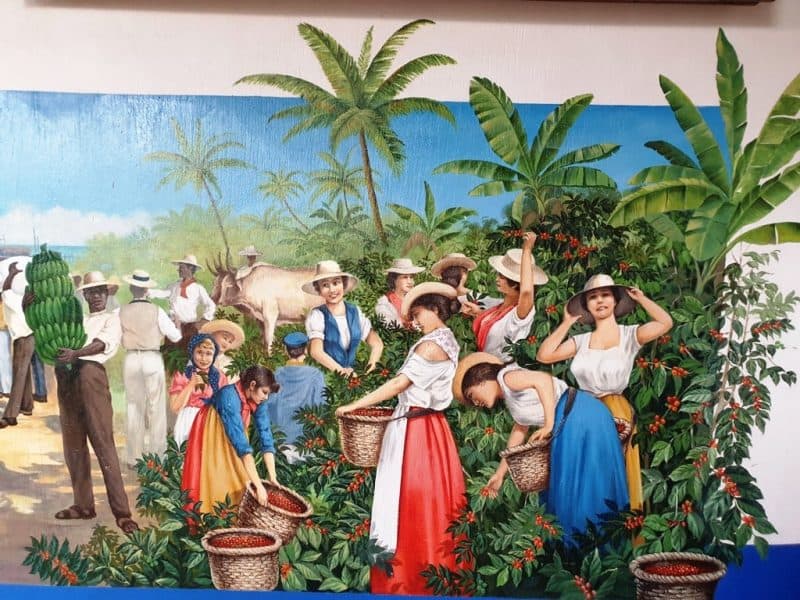
Of course, what put Sarchí on the map was their traditional ox carts. Now seen as a National Symbol of Costa Rica, ox carts have been used for centuries to transport and trade goods, such as coffee and bananas, throughout Costa Rica. In the early 19th Century, much of the country was undeveloped, rugged terrain. The roads were nothing more than dirt tracks meandering through the valleys.
The humble ox cart was one of the only means of travel through the perilous paths, even if it did take weeks on end to complete the trip.
But what makes these ox carts so special?
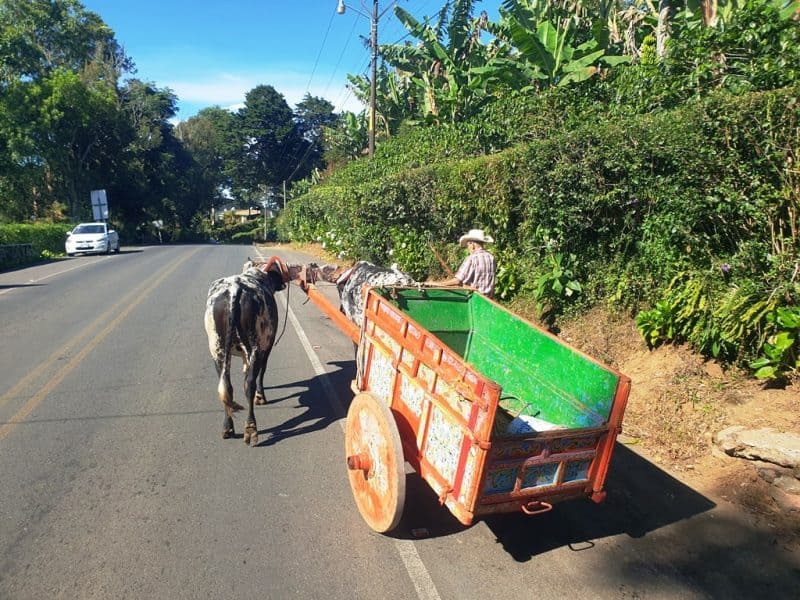
Well, the artwork for one. Traditional ox carts are highly decorative, using intricate and often handmade carvings into the wooden frames. Typically, vibrant colors of blues, yellows, and reds and used to create an ornate finish.
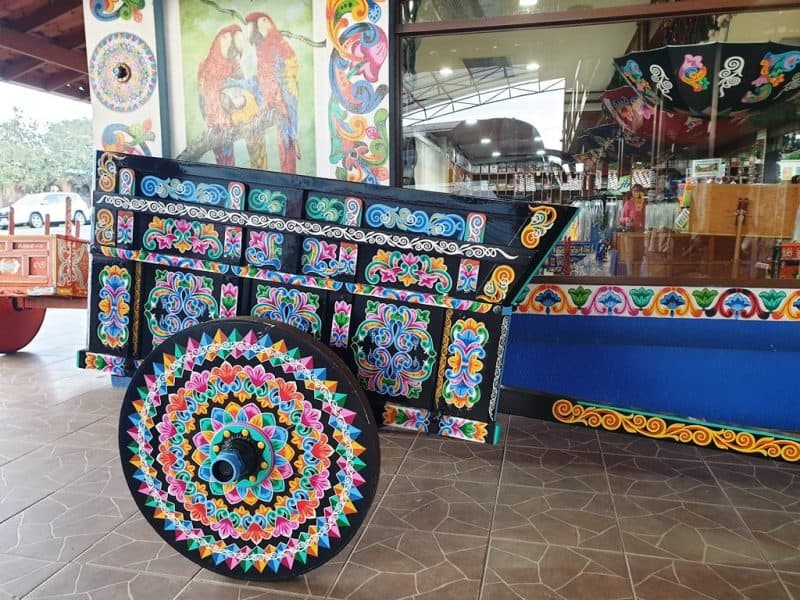
With the recent development of mega highways that connects Costa Rica, ox carts in Costa Rica are often used for decorative purposes, although traditional farmers can still be seen tending to their carts and navigating their ox. In Sarchí, the ox carts are used as symbols of Costa Rica in times of celebrations and parades.
You might be interested in the following tours that include a visit to Sarchi:
San José: Private Tour to Poás Volcano & Sarchí with Lunch
From San José: Sarchi Souvenir Shopping Private Guided Tour
What to do in Sarchí
Incredibly, Sarchí is thought to be the birthplace of ox cart artwork. Today, you can visit what is thought to be the oldest oxcart factory, built in 1902: The Joaquin Chaverri Oxcart Factory.
Although the town has found fame with the intricate designs of the oxcarts, Sarchí is inundated with locally crafted furniture and souvenir shops. Expect to find hand-crafted utensils, jewelry, and bowls, as well as larger items such as tables and chairs.
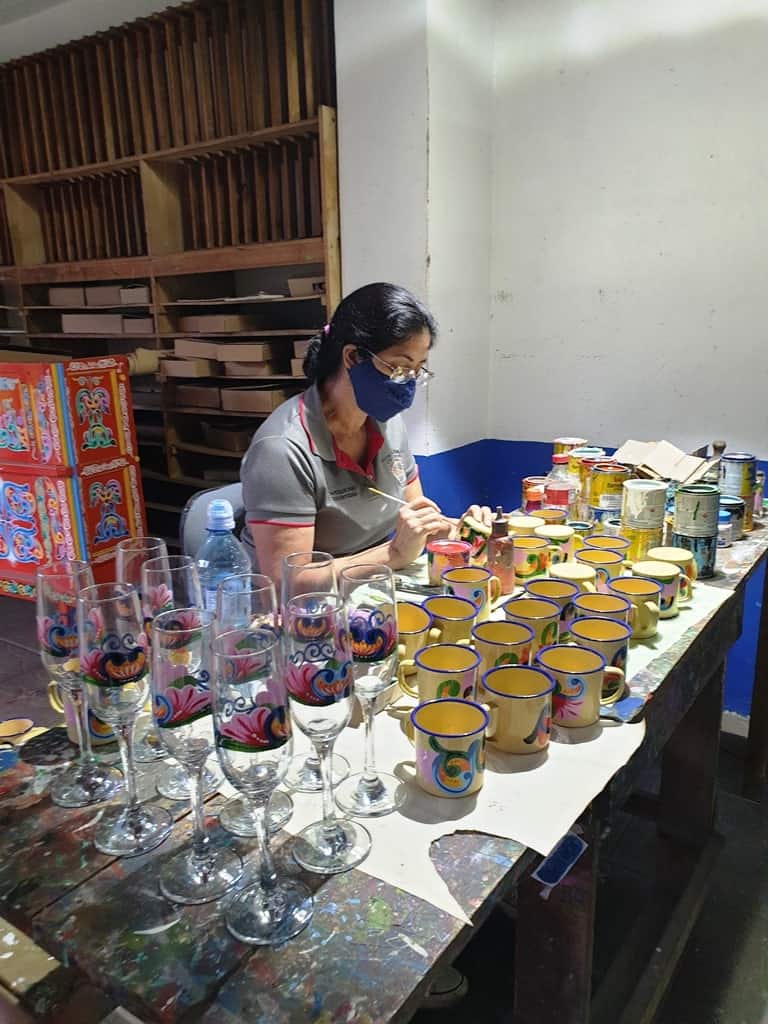
Although tourists make up a large proportion of the economy in buying souvenirs, much of the larger wooden artifacts are destined for the local market. After hundreds of years, and knowledge passed from generation to generation, the industry is still booming.
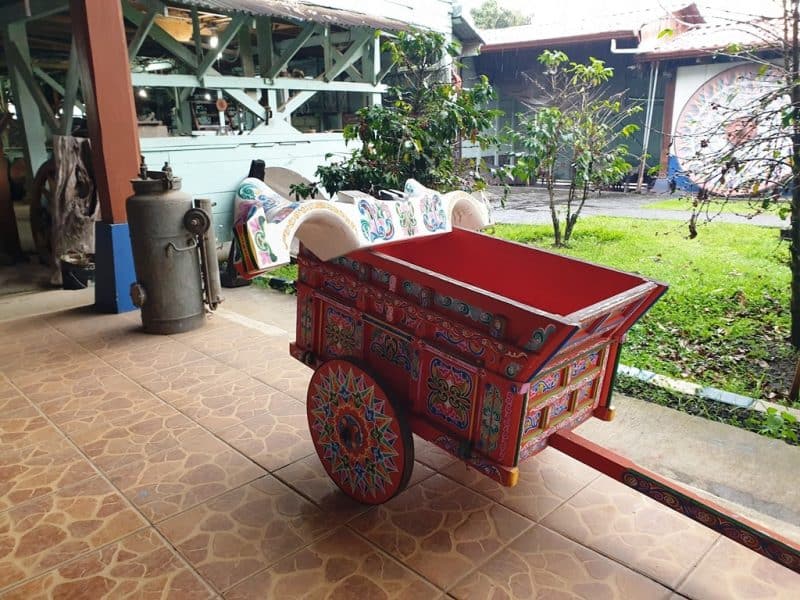
Be sure to discover the unique Sarchí church that sits upon a hill and overlooks the town below. Built in the 1950s, this two-spired church is painted blue and pink, keeping in line with the colorful town aesthetics. Just by gazing upon this church, and the grounds it sits on, an artistic flare reveals itself. It truly is quite a beautiful sight.
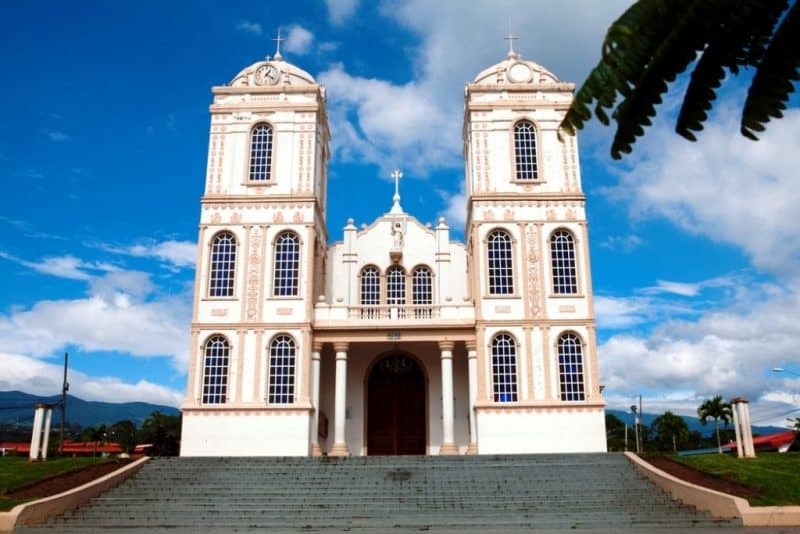
Fortunately, Sarchí is nestled within the lush countryside of Costa Rica. And whilst one can lose themselves mooching around the charming shops for hours on end, be sure to check out the surrounding areas that encompass the town.
Explore the surrounding coffee plantations or even take a trip to the nearby Poas Volcano; a geological spectacle with one of the world’s largest crater lakes. Explore Catarata Caida Del Cielo, a spectacular waterfall system complete with refreshingly cool, blue pools below.
This can all be completed in a day trip from Alajuela or San Jose. Or, escape the rushed feeling and book into one of the many accommodations around the town for the night.
You might be interested in the following tours that include a visit to Sarchi:
San José: Private Tour to Poás Volcano & Sarchí with Lunch
From San José: Sarchi Souvenir Shopping Private Guided Tour
How to get to Sarchí, Costa Rica
You may have heard that Costa Rica can be quite complicated to travel around. Not because of the inaccessibility of the roads, but because of the topography of the country. With over a third of the country designated as National Parks and much of Alajuela dominated by Volcanos and mountains, it can take quite some time to get between destinations.
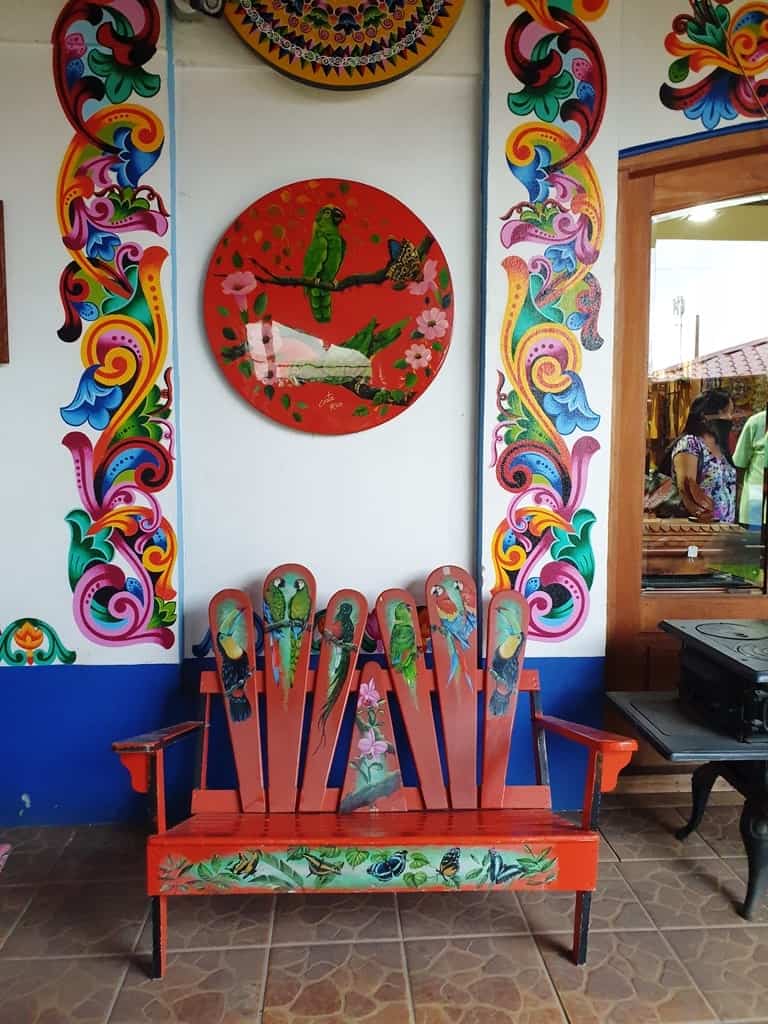
One of the greatest assets of Alajuela is that the main airport of Juan Santamaria can be found in the very heart of the province. This means a plethora of buses and rental car services are available.
Roads are well signposted and navigating the way is not hard, just be cautious of the windy roads and oncoming trucks.
There are a few possibilities, and easy, options driving to Sarchí. The fastest is by taking Interamerican Highway (Autopista Bernardo Soto) West towards Naranjo. Alternately, and probably easier, follow the numerous signs towards Grecia.
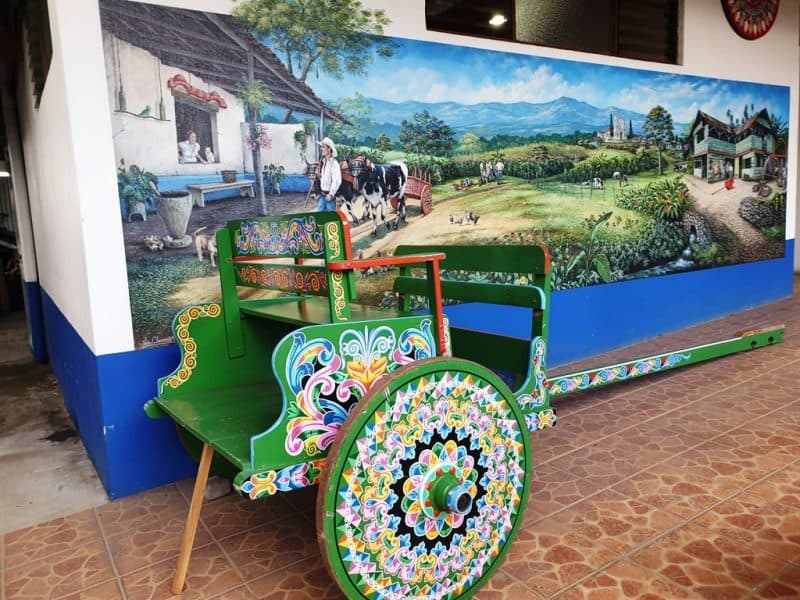
Grecia is just a few kilometers East of Sarchí and is the nearest large town. Not only is it accessible by car, but buses also make the journey to Grecia multiple times a day, and for a cheap price of under 1000 colones (less than $2).
Click here to look at the bus timetable from Alajuela to Grecia.

